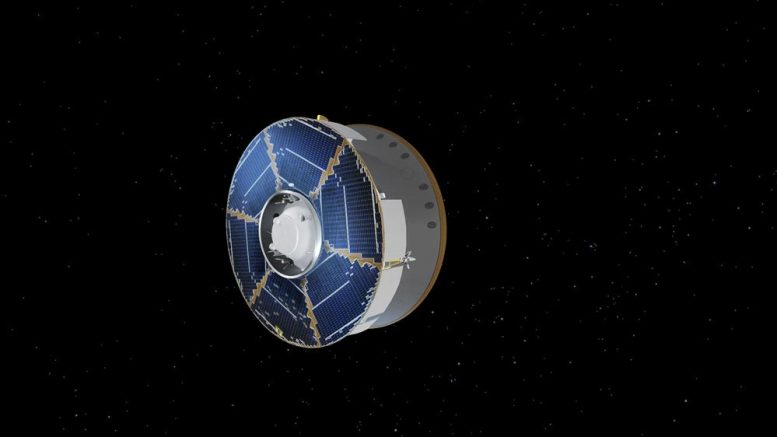
Illustration of the NASA Mars 2020 Perseverance spacecraft cruising in space. The cruise phase began after the spacecraft separated from the rocket, soon after launch. The spacecraft departed Earth at a speed of about 24,600 mph (about 39,600 kph). The trip to Mars will take about seven months and about 300 million miles (480 million kilometers). During that journey, engineers have several opportunities to adjust the spacecraft’s flight path, to make sure its speed and direction are best for arrival at Jezero Crater on Mars. The first tweak to the spacecraft’s flight path will be about 15 days after launch. Credit: NASA/JPL-Caltech
The team controlling NASA’s Mars 2020 Perseverance rover has received telemetry (detailed spacecraft data) down from the spacecraft and has also been able to send commands up to the spacecraft, according to Matt Wallace, the mission’s deputy project manager. The team, based at NASA’s Jet Propulsion Laboratory in Southern California, has confirmed that the spacecraft is healthy and on its way to Mars.
Wallace provided a more detailed update on two issues during launch operations:
“First, the proximity of the spacecraft to Earth immediately after launch was saturating the ground station receivers of NASA’s Deep Space Network. This is a known issue that we have encountered on other planetary missions, including during the launch of NASA’s Curiosity rover in 2011. The Perseverance team worked through prepared mitigation strategies that included detuning the receivers and pointing the antennas slightly off-target from the spacecraft to bring the signal within an acceptable range. We are now in lock on telemetry after taking these actions.
“The second issue was a transient event involving temperature on the spacecraft. The mission uses a liquid freon loop to bring heat from the center of the spacecraft to radiators on the cruise stage (the part that helps fly the rover to Mars), which have a view to space. We monitor the difference in temperature between the warm inlet to the radiators and the cooler outlet from the radiators. As the spacecraft entered into Earth’s shadow, the Sun was temporarily blocked by Earth, and the outlet temperature dropped. This caused the difference between the warm inlet and cooler outlet to increase. This transient differential tripped an alarm and caused the spacecraft to transition into the standby mode known as ‘safe mode.’
“Modeling by the team predicted something like this could happen during eclipse – the time when the spacecraft is in Earth’s shadow – but we could not create this exact environment for tests prior to launch. Nor did we have flight data from Curiosity, because its trajectory had no eclipse. We set the limits for the temperature differential conservatively tight for triggering a safe mode. The philosophy is that it is far better to trigger a safe mode event when not required than miss one that is. Safe mode is a stable and acceptable mode for the spacecraft, and triggering safe mode during this transitional phase is not problematic for Mars 2020.
“With the understanding of the causes of these issues, we are conducting the operations necessary to move the spacecraft back out of safe mode and into normal cruise mode.”
Update:
Flight controllers for NASA’s Mars 2020 mission have returned the spacecraft to nominal flight operations.
Launched on July 30 at 7:50 a.m. EDT (4:50 a.m. PDT), Mars 2020 entered a state called safe mode soon after it was placed on an interplanetary trajectory because a sensor indicated that part of the spacecraft was slightly colder than expected. When a spacecraft enters safe mode, all but essential systems are turned off until it receives new commands from mission control.
“With safe mode exit, the team is getting down to the business of interplanetary cruise,” said Mars 2020 deputy project manager Matt Wallace of NASA’s Jet Propulsion Laboratory. “Next stop, Jezero Crater.”
Managed by JPL, a division of Caltech in Pasadena, California, the Mars 2020 Perseverance rover is part of a larger program that includes missions to the Moon as a way to prepare for human exploration of the Red Planet. Charged with returning astronauts to the Moon by 2024, NASA will establish a sustained human presence on and around the Moon by 2028 through NASA’s Artemis program.

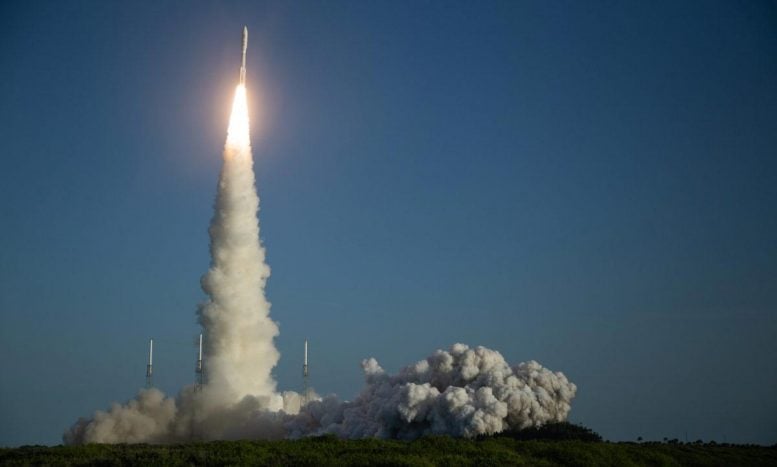


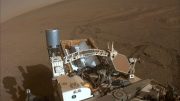
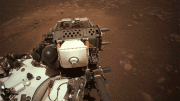
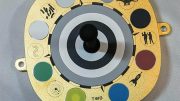
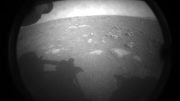

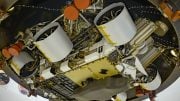
I’m confused by the math on Perseverance’s trip to Mars. The article says it is a 300 million mile journey and that the spacecraft is traveling at 24,600 mph. That works out to a 508 day trip but it also says it is a seven month journey. How can this be?
Does the spacecraft benefit from the earth traveling through space at 67,000 miles per hour? Perhaps this gives the craft a boost relative to mars traveling at 54,000 mph; (67,000-54,000)+24,600 gives a relative speed of 37,400 mph from the departure to arrival point?
I’m glad you asked this question because I couldn’t make the math work either. 310 million miles in roughly 210 days works out to be about 62,300 MPH. A far cry from their speed of 24,600 MPH.
300 million miles = when these both planets are in opposite side while rotating around sun.
Reason this Perseverance will get there by in seven months is because these both planets are very close to each other right now. If we miss this time window we have to wait another 2 years for these two planets to be in this kind of position in our solar system.
Does it possibly speed up due to Mars gravitational influence?
Neil, regardless what the max distance is between the two planets, the distance traveled given in the article is 300 million miles. The math works out to just under 1 year and seven months. I believe the editor missed that 1year was erroneously left out of total time travel.
Disregard my previous comment….all other news sources say 7 moths to touchdown. But, none explain the math.
ITS ALL FAKE NASA THAT IS.
Dont be an idiot
Jerry
Your unsupported opinion is worth exactly what I paid for it.
Mars distance varies from earth. Average is about 225 million km. So, perhaps 180 million miles, not 300 million miles, as I undertand it.
Its not traveling in a straight line but a curved trajectory. Once it reaches mars orbit the planet is trailing the spacecraft, and essentially catches up to the craft. This curved trajectory is what makes the journey so long.
I would love to study astrodynamics. Great questions. The fun part is figuring out the answers.
Keep it coming
Yes, earth’s 67000 mph (sun-centric) plus the probe’s 24600 mph escape from earth works out to 136 days, but that’s oversimplified, because it’s approximately on a Hohmann transfer orbit that takes the probe to aphelion, and is slowing it down the whole time, too. Specific Mechanical Energy stays constant. Heliocentric potential energy goes up, kinetic energy goes down.
Also, keep in mind that the trip involves three different frames of reference: relative to Earth, relative to the Sun, and relative to Mars. The probe has enough velocity relative to Earth to have forever escaped the possibility of falling back to earth (excluding collision). Now it has its own solar orbit. The majority of the trip is influenced by the Sun. I’m guessing that 300 million mile distance is the curved track the probe will follow from its perihelion which started at Earth’s solar orbit, all the way to approximately its aphelion, in which vicinity hopefully Mars will be also, seven months from now. Then Mars’ gravity will be used to finesse the probe into orbit around Mars. So it’s hard to say which velocity they’re quoting. It looks like a velocity relative to Earth, and a distance relative to the Sun.
The 24,600 Mph given is the velocity added by the launching rocket.. add that to the earth’s orbital velocity around the sun, about 67,000 mph, to give 91,800 mph… multiply that over the 5,000 hour cruise (7x30x24)… this would go 470 million miles..but the velocity will constantly reduce, slow by the sun’s gravity as Perseverance moves beyond earth orbit..
So 7 month cruise sounds about right to go 360 million miles
Thanks for the comments. I was having the same problem with the travel distance, flight time, and average speed.
I think it likely that the 24,600 miles per hour applies to the speed the space craft had relative to the Earth (surface rotating under the space craft in the same rocket’s direction) just as the boost to interplanetary space by the upper stage finishes. It could also be reported as “Space-Fixed Velocity (ft/sec)” which could be a velocity relative to the center of the Earth. The figure of 24,600 miles per hour is slightly higher than the speeds reported for moon-bound Apollo space craft just after Trans Lunar Injection or (TLI). I found a table reporting TLI “velocities” (instead of speeds) for each Apollo that went to the moon. The table includes Apollo 13 but not the Earth orbit Lunar Module testing Apollo 9. For Apollo 11, the first landing on the moon, the table reports an Earth Fixed Velocity (ft/sec) 34,195.6 (That works out to 23,315.2 miles per hour.) and a Space-Fixed Velocity (ft/sec) of 35,545.6 (24,235.6 miles per hour) To recover this material, I moved in two steps from https://en.wikipedia.org/wiki/Trans-lunar_injection#cite_note-7 to
https://history.nasa.gov/SP-4029/Apollo_18-24_Translunar_Injection.htm
The Mars counterpart here could or would be Trans Mars Injection or TMI. See for example https://en.wiktionary.org/wiki/trans-Mars_injection. This yields the definitions. Perhaps a further search would yield a table with values for flights to Mars. One might explore animations. It is likely in any case that unit conversion would be useful for full comparisons.
Cordially,
Peter Deutsch PhD in physics
Retired Penn State faculty member
Aliquippa, PA
I had this confusion as well. Glad to have found others who spotted the same issue.
The issue of confusion turned out to be the “Speed” of Perseverance. The speed listed in NASA’s PR of 24,600 mph[1] was only the “launch” speed (relative to Earth). Some sites mistakenly called it “cruising speed“[2], which is the speed of the rocket in the space, which is incorrect.
Perseverance, once it got into space, was benefiting from Earth’s speed. According to a snapshot of NASA’s eyes site, it was going around 68,000 mph (relative to the Sun)[3]. Earth’s speed around the sun is 67,000 mph[4].
The distance traveled by Perseverance is indeed 292 million miles, since it was catching up to Mars as it was moving away (as seen by the image above, taken from NASA’s site[5]).
[1] https://mars.nasa.gov/mars2020/timeline/cruise/
[2] https://scitechdaily.com/nasa-mars-2020-perseverance-cruising-at-24600-mph-on-its-300-million-mile-journey-to-mars/
[3] https://www.reddit.com/r/PerseveranceRover/comments/iu2uy9/i_literally_spend_hours_just_watch_perseverance/
[4] https://www.space.com/33527-how-fast-is-earth-moving.html
[5] https://mars.nasa.gov/resources/25156/perseverances-route-to-mars/
Utter nonsense